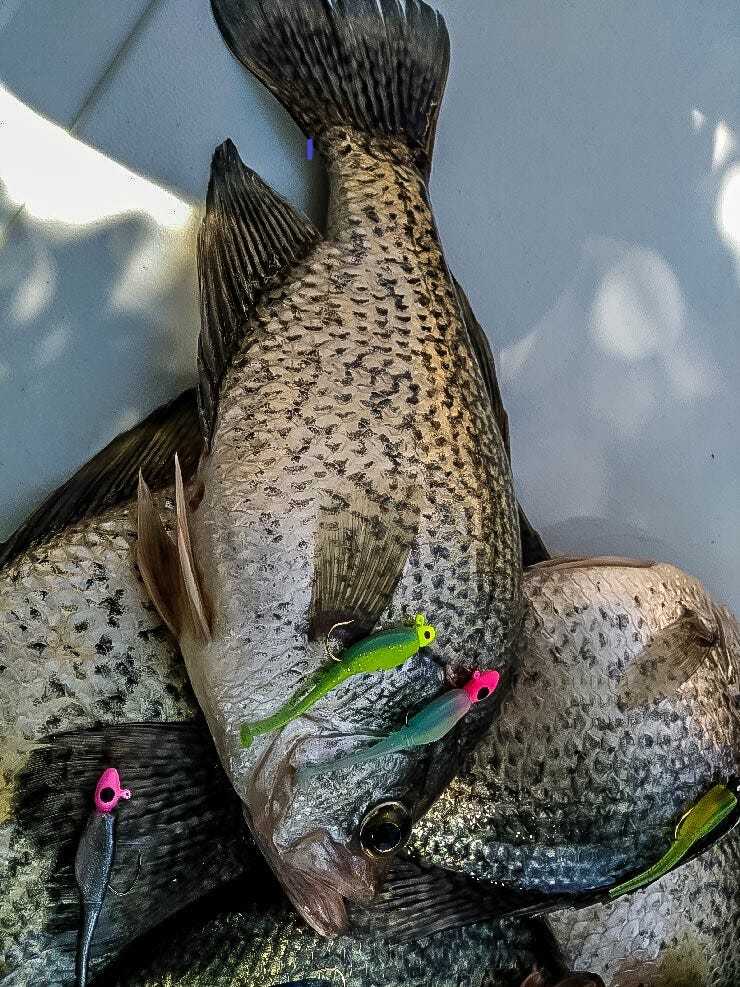- Apr 9, 2021
Learn Why Crappie Jigheads Matter
Don’t think for a moment that all jigheads are created equal or that the only real decision regarding these critical crappie catching components is the weight of head to choose.
With so much that is commonly discussed about crappie baits, the ways those baits move in the water and the significance of bait colors, important distinctions related to the heads that complement those baits get very little attention. Folks sometimes give passing mention of a jighead’s weight and occasionally color (both critical), but the conversation usually ends there.
We want to correct that because crappie jigheads matter, and many differ substantially from one another. Jigheads vary in weight, shape, eye positioning and angle, color, decoration, hook design and hook used, to name some of the most common variables. We’ll look at important variables one a time to help you make the best decisions.










